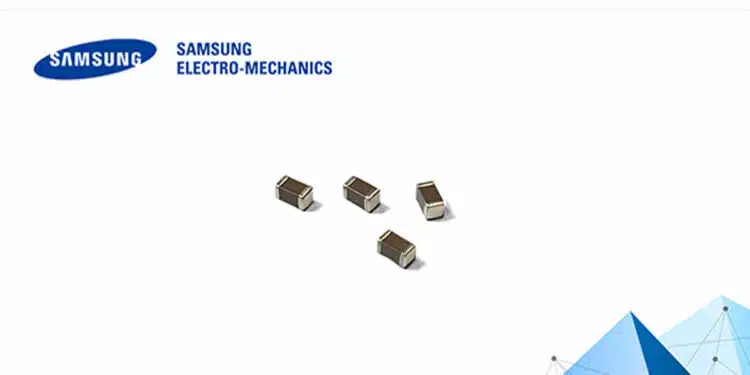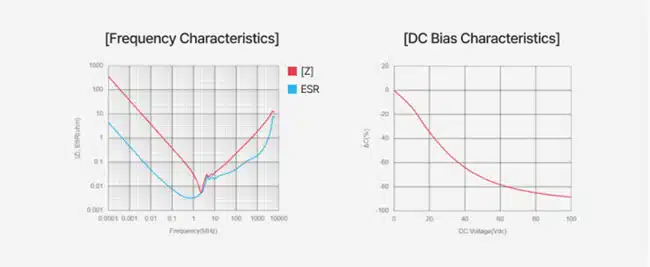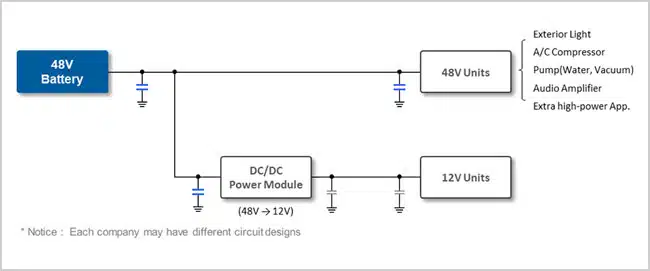Samsung Electro-Mechanics more than doubles the capacitance of the existing 1206 inch, 100V X7S MLCC automotive capacitors, meeting the demand for miniaturized high-capacitance MLCCs and voltage stability.
Samsung has developed the CL31Y475KCK6PN# Multilayer Ceramic Capacitor (MLCC) for use in automotive powertrain and safety systems and has started mass production.
Samsung Electro-Mechanics is continuously expanding its range of 100V miniaturized high-capacitance MLCCs, which are used in 48V power supply lines, by applying proprietary ceramic dielectric and electrode material refinement and ultra-precise stacking techniques.
These efforts contribute significantly to the reduction of component count and miniaturization of assemblies, thereby optimizing product design.
Samples are now available.
| Samsung | Size | Capacitance | Rated Voltage | TCC |
|---|---|---|---|---|
| CL31Y475KCK6PN# | 1206 inch | 4.7uF | 100V | X7S |
Characteristic data
As automobiles strive to improve both fuel and electrical efficiency, there is a clear trend towards using 48V auxiliary battery systems. This shift has led to an escalating demand for miniaturized, high-capacitance 100V MLCCs used in the power supply lines.
Samsung Electro-Mechanics is steadily expanding its range of miniaturized high-capacitance 100V MLCCs. These capacitors help reduce the number of MLCC components and facilitate the miniaturization of assemblies, thereby enhancing the optimization of product design.

































